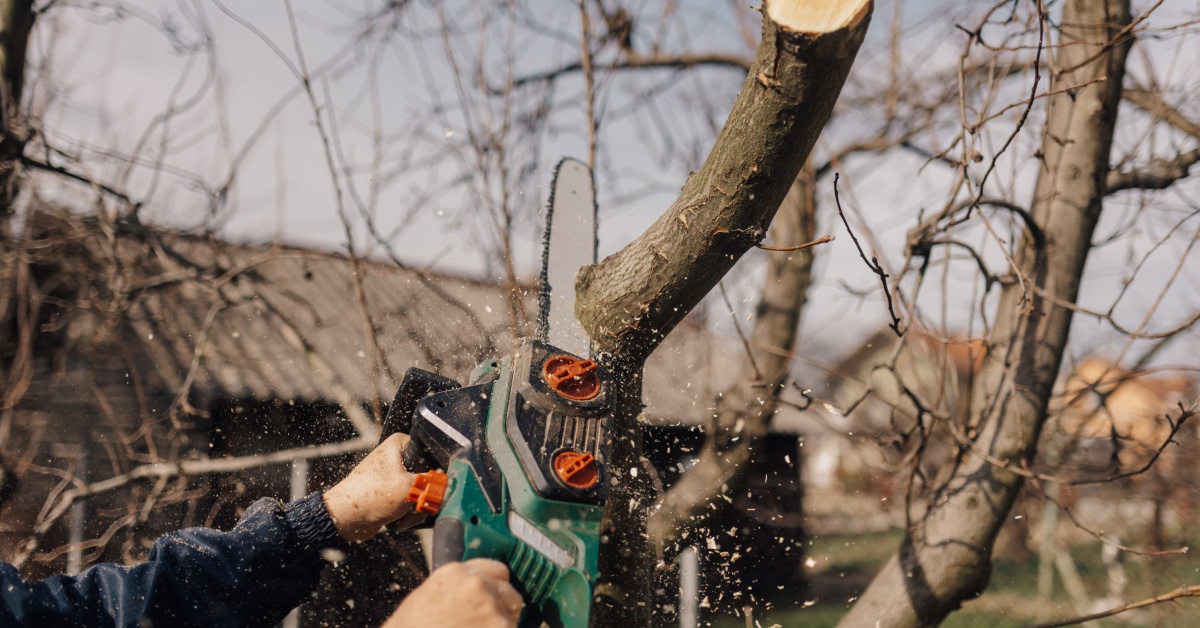Strategic pruning improves tree structure, strengthens storm resistance, and prevents costly damage across Virginia landscapes. Every cut influences how a tree grows, distributes nutrients, and handles future stress.
In regions such as Richmond, Waynesboro, and Christiansburg, both residential and commercial properties benefit from precise timing and professional technique. Homeowners and property managers protect long-term value by approaching tree care with knowledge, not guesswork.
Know When to Prune for Health and Safety
Late winter offers the best time to prune most tree species in Virginia because sap levels remain low, fungal activity stays minimal, and trees have not yet entered the stress of spring growth. Pruning during dormancy helps wounds close faster, reduces the chance of insect infestation, and creates cleaner branch structures before energy shifts into leaf development. Trees pruned just before the growing season begin spring with balanced weight, improved shape, and fewer structural liabilities.
Although summer pruning works for minor thinning, it often weakens trees during dry, hot weather when hydration and energy are already strained. In comparison, autumn pruning introduces decay because trees begin to close down vascular flow and fungi multiply more easily in cooler, damp conditions. Following this step in our complete guide to proper tree pruning allows you to match biological time with ideal structural results.
Identify Dead, Diseased, or Hazardous Branches First
Dead branches appear brittle, contain no buds, and often display lighter, drier bark than living branches. Easily split bark that leaks dark sap or hosts visible fungus often points to internal decay that spreads silently through the canopy. Insects target weakened limbs early, using cracks and soft tissue to nest or lay eggs, which leads to infestation within the stronger portions of the tree.
Limbs that stretch above rooftops, fences, or power lines create safety hazards that worsen during storms, wind events, or periods of heavy snow. Dead branches left attached often attract insects, leak sap, or develop fungal infections that spread through surrounding tissue.
Choose the Right Tools for the Job

Each pruning task demands tools sized and shaped for the branch involved. Bypass pruners deliver clean cuts on green wood, loppers provide extra leverage for thicker limbs, and curved handsaws remove medium-sized branches without tearing bark. For taller trees, a pole saw with a hooked blade lets you stay grounded while reaching into upper canopies.
Once you’ve chosen the right cutting tool, focus on maintaining its condition and cleanliness. Clean, sharp blades make safer, faster cuts that help trees heal without jagged edges or exposed tissue. In addition to tool care, disinfect every blade between trees with alcohol or bleach solution to prevent spreading fungal spores or bacteria. When pruning from below or above, use protective gear such as gloves, hard hats, and safety glasses to reduce injury from falling limbs or tool slips during longer pruning sessions.
Make Proper Cuts That Encourage Strong Growth
Every cut affects the way a tree grows and seals itself, so cut placement matters just as much as blade quality. Always cut just beyond the branch collar, which contains the tissue that controls healing and disease resistance without creating stubby regrowth. Angled cuts that slope away from the trunk shed moisture naturally and prevent pooling that causes decay.
A three-step approach—undercut, relief cut, and final collar cut—protects tree bark, stabilizes the branch during removal, and reduces visible trunk scarring. We at Valley Landscaping offer the commercial landscape maintenance Virginia business owners rely on for safe, precise, and long-lasting tree care. Large limbs require a three-step technique to prevent bark tearing and trunk damage: first an undercut, then a relief cut farther out, followed by a final clean cut near the collar.
Shape Young Trees for Future Structure
Young trees benefit more from light structural shaping than they do from heavy corrective pruning later in life. Focus on forming a single strong leader branch, evenly spaced scaffold limbs, and open centers that improve airflow and light distribution. Cut away vertical shoots that challenge the central leader so trees develop balanced height and sturdy, outward branches.
Shaping decisions made in the first five years prevent costly repairs or removals once trunks mature and branches thicken. Early intervention also reduces wind resistance and increases root anchoring through proportional growth. Trees that begin life with thoughtful structure require less correction and deliver more shade, beauty, and strength throughout adulthood.
Avoid Common Pruning Mistakes

Our guide to proper tree pruning wouldn’t be complete without mentioning the mistakes to avoid. Improper pruning shortens tree lifespan, exposes bark to infection, and weakens structural integrity over time. For example, flush cuts damage healing zones by removing the branch collar, while stub cuts block sealing tissue from forming correctly. In addition, topping removes too much canopy at once, stressing the tree and encouraging brittle, unstable regrowth near wound sites.
Beyond poor technique, excessive pruning strips away too much foliage and leaves trees vulnerable to sunscald, dehydration, and disrupted nutrient flow. Prevent crown loss, dehydration, and weakened nutrient distribution by removing no more than one-quarter of the canopy during any single pruning session. With the right technique and proper timing, trees recover faster and develop stronger, more consistent growth over time.
Without clear goals, pruning leads to poor structure and uneven branch development that affects balance and strength. Every decision you make with your shears must support long-term form, not just appearance or convenience. To guide the process, consider how light, airflow, and branch spacing work together to create a stable, attractive canopy.
Know When to Call a Professional
Certain situations require experience, equipment, and training that extend beyond what homeowners or groundskeepers can manage safely. Tall trees, damaged limbs near buildings, and trees with uncertain internal structure should never be handled without proper climbing gear, rigging tools, or fall protection. Tree species such as sycamore and beech develop dense wood and poor compartmentalization, which makes improper cuts more harmful.
Professionals evaluate trunk condition, root health, pest exposure, and nearby structures to determine the safest, most effective pruning strategy. Certified crews complete the work quickly, dispose of debris safely, and avoid secondary damage to property or landscape features. When safety or structural complexity outweighs the benefits of DIY pruning, rely on a trusted local provider with full insurance, experience, and knowledge of Virginia’s native trees.
Pruning offers more than aesthetics—it supports every branch, root, and leaf a tree produces over decades of growth. Each cut you make, or choose not to make, influences strength, balance, and longevity across seasons and soil conditions.
Careful, informed tree work protects people, buildings, and landscapes while reducing future maintenance and avoiding unnecessary removal. Contact Valley Landscaping today to schedule expert tree care backed by experience, professionalism, and a commitment to keeping Virginia properties safe and beautiful.



